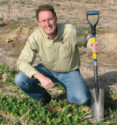Advertise Follow Us
Items Tagged with 'green bridge'
ARTICLES
‘Spray And Wait’ Is Critical To Tackling Green Bridge Pathogens
While green bridge is a major disease worry in the Pacific Northwest, it’s a problem Midwestern no-tillers should be leery of with certain crop rotations and cover crops.
Read More
What I've Learned from No-Tilling
No-Till Isn’t The Goal – It’s Sustainability
Improving the soil resource — even within long-term no-till — is one way Hans Kok believes farmers will hit higher, sustainable yields.
Read More
Diseases Travel Over "Green Bridge" To Quietly Steal No-Till Yields
Pathogens feed on dying plants then live long enough to prey on newly planted crops1
Read More
What I've Learned from No-Tilling
Do More With Less!
With direct seeding, three men handle 4,000 acres.
Read More








